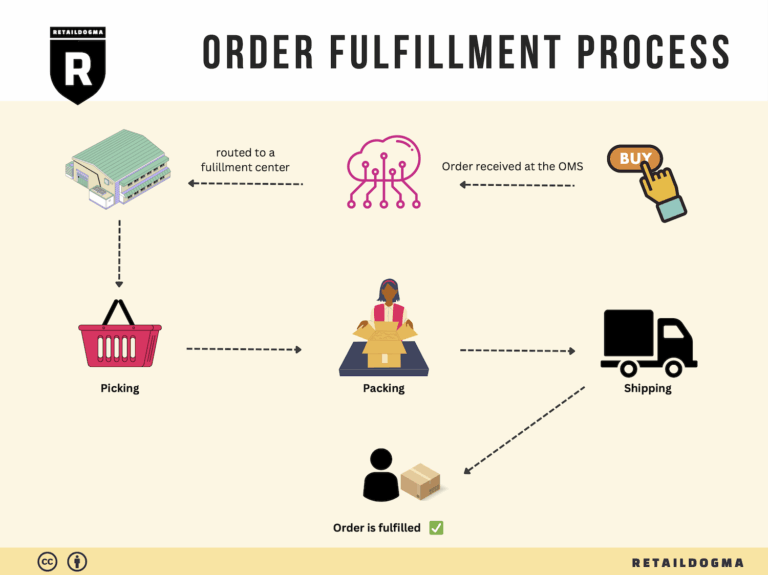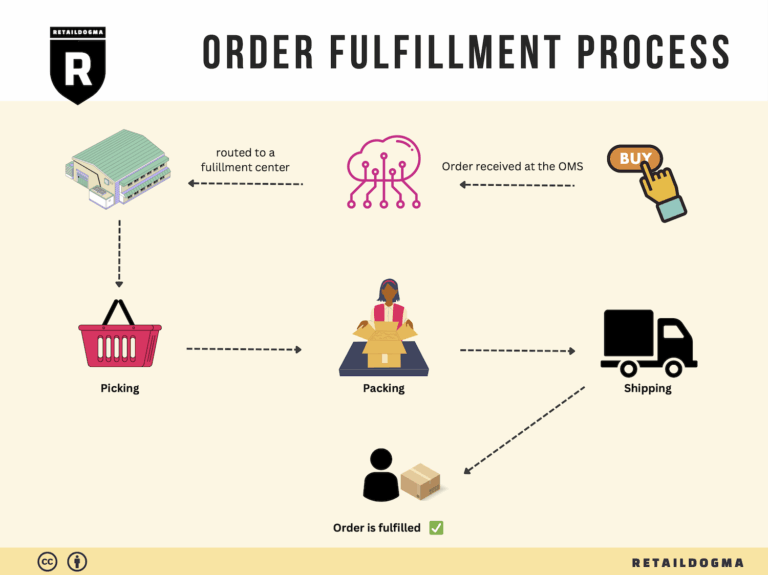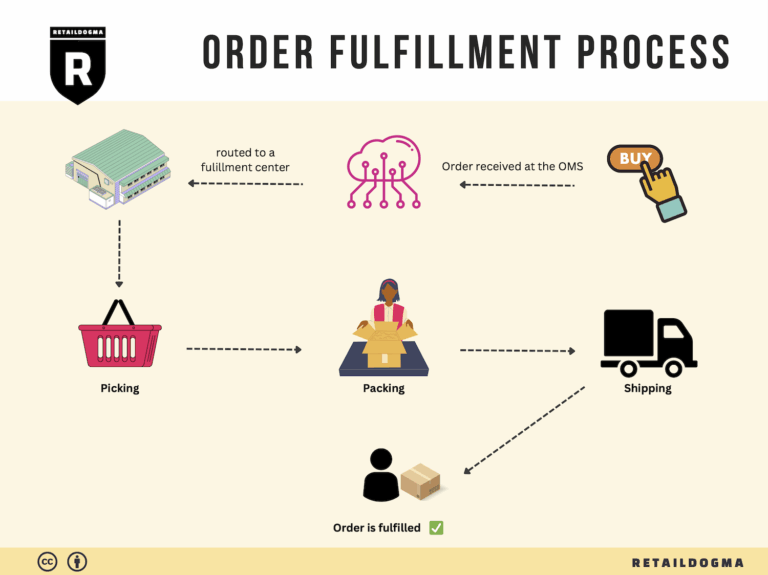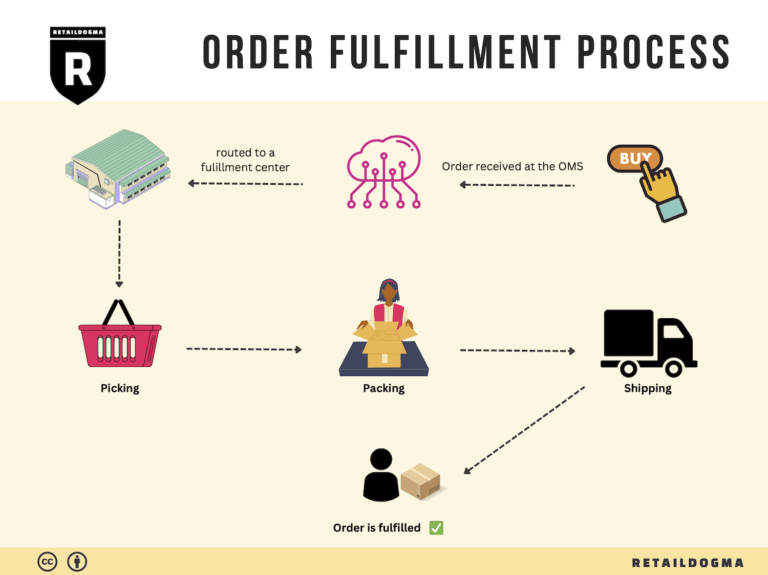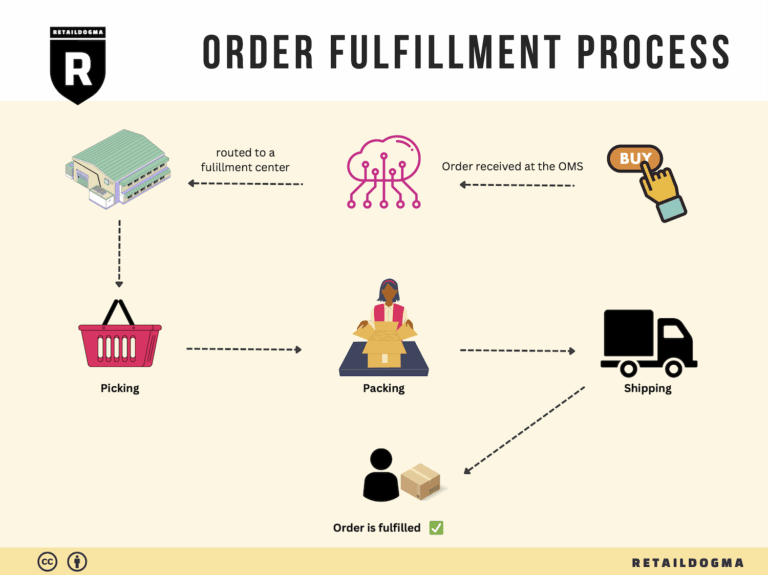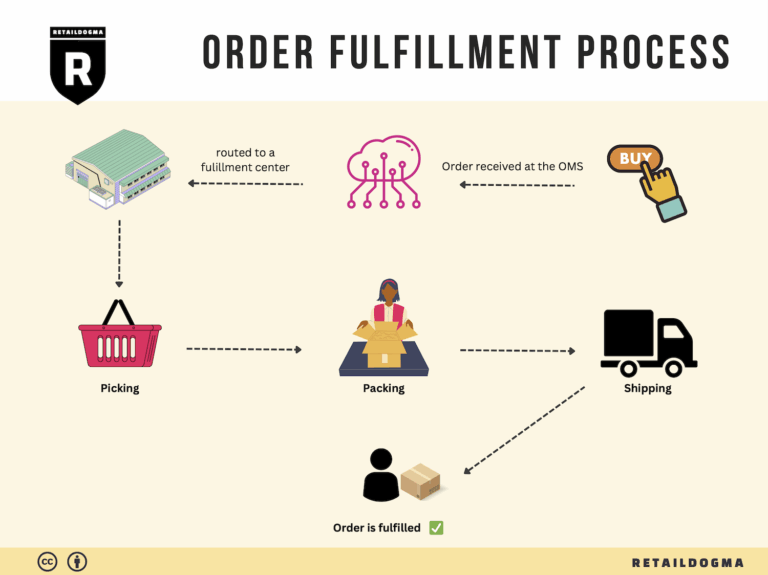How Order Fulfillment Works: A Step-by-Step Guide for Businesses
What is E-commerce Fulfillment? An Introduction for Growing Businesses
Understanding the Challenges of E-commerce Fulfillment
As your online business begins to grow, the excitement of increasing sales can quickly turn into overwhelm when it comes to packing and shipping orders. Many entrepreneurs find themselves buried under boxes, shipping labels, and inventory management, leading to frustration and inefficiencies that can stall further growth. This common pain point highlights the importance of a well-structured fulfillment process—a crucial element in the e-commerce landscape.
Fulfillment, at its core, is the process of getting a product from your warehouse or fulfillment center to your customer’s doorstep. It encompasses everything from inventory management and order processing to packing and shipping. Understanding this process is essential for any growing business looking to streamline operations and improve customer satisfaction.
In this guide, we will explore various aspects of e-commerce fulfillment, starting with the different fulfillment models available to businesses today. We’ll delve into Third-Party Logistics (3PL) providers, Fulfillment by Amazon (FBA), and in-house fulfillment, discussing the pros and cons of each option. This knowledge will empower you to choose the right model that aligns with your business goals and operational capabilities.
Next, we will outline the core services that are typically included in fulfillment solutions. These may range from inventory storage and order processing to packaging and shipping. Understanding these services will help you evaluate potential partners and ensure you are getting the most value from your fulfillment operations.
Choosing the right fulfillment partner is a critical decision that can significantly impact your business’s efficiency and customer experience. This guide will provide actionable insights on what to look for in a fulfillment partner, including technology capabilities, scalability, and customer support.
Finally, we will address the often perplexing topic of pricing in fulfillment services. We’ll break down the various cost components, enabling you to make informed decisions and budget accordingly as you scale your operations.
The ultimate goal of this guide is to empower you, the business owner, to make smart, strategic decisions about your logistics. By understanding the intricacies of e-commerce fulfillment, you can alleviate the burdens of packing and shipping, allowing you to focus on what truly matters: growing your business.
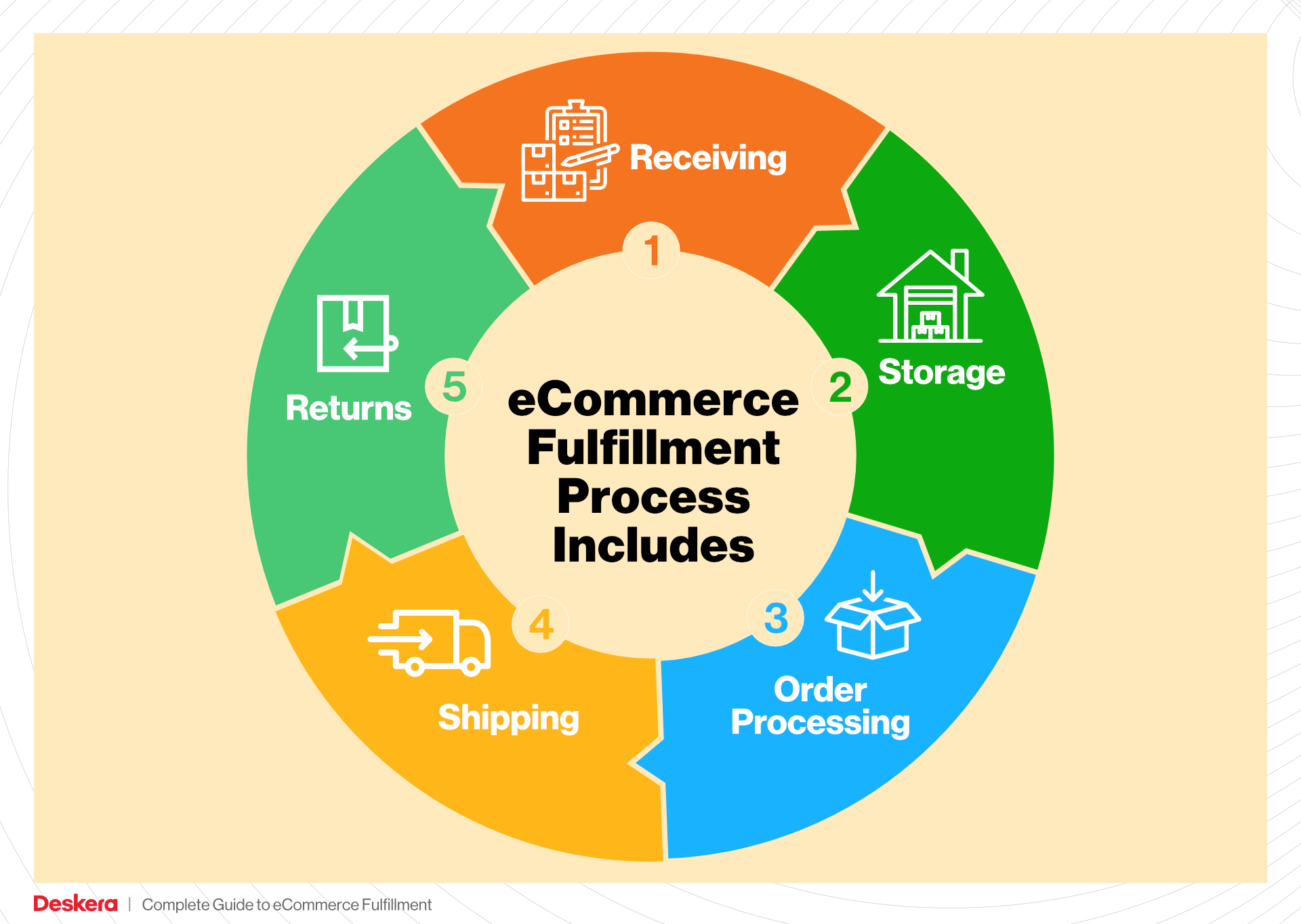
What You’ll Learn In This Guide
- What is E-commerce Fulfillment? An Introduction for Growing Businesses
- The Order Fulfillment Process: From ‘Buy’ Button to Customer’s Door
- Comparing Fulfillment Models: In-House vs. 3PL vs. Dropshipping
- A Deep Dive into Amazon FBA: Pros, Cons, and Who It’s For
- Core Services Offered by Fulfillment Centers
- How to Choose a Fulfillment Partner: A 6-Point Checklist
- Understanding Fulfillment Pricing: A Breakdown of Common Fees
- Frequently Asked Questions (FAQs) about Fulfillment
- Conclusion: Is Outsourcing Fulfillment the Right Move for Your Business?
- Important Disclaimer
The Order Fulfillment Process: From ‘Buy’ Button to Customer’s Door
1. Receiving Inventory
The first step in the order fulfillment process is receiving inventory. When products arrive at your warehouse or fulfillment center, they must be checked against purchase orders to confirm accuracy. This involves inspecting the items for quality, quantity, and any potential damage. Key terms associated with this step include SKU (Stock Keeping Unit), which helps uniquely identify each product variant.
This stage is crucial because it sets the foundation for effective inventory management. Accurate receiving ensures that your inventory levels are up-to-date and that you have what you need to fulfill customer orders promptly. Errors during this stage can lead to stock discrepancies, which can result in delays or incorrect shipments later on. By implementing a robust receiving process, you can minimize these risks and maintain a seamless flow of products into your warehouse.
2. Warehouse Storage
Once the inventory is received and verified, the next step is warehouse storage. This involves organizing and storing the products in designated areas of the warehouse. Effective storage solutions often utilize ABC analysis, a method of categorizing inventory based on its importance and turnover rate.
Proper storage is critical for several reasons. First, it maximizes the use of available space, allowing for efficient retrieval when orders are placed. Second, it improves overall operational efficiency by reducing the time employees spend searching for items. By adopting a systematic approach to warehouse storage, businesses can enhance their fulfillment speed and accuracy, ultimately leading to better customer satisfaction.
3. Order Picking
With products securely stored, the next phase is order picking. When a customer places an order, the items must be retrieved from their respective storage locations. This step often relies on pick lists, which are generated based on customer orders and guide warehouse staff in selecting the correct items.
Order picking is a pivotal part of the fulfillment process because it directly impacts delivery times. Efficient picking methods, such as batch picking or wave picking, can significantly reduce the time it takes to assemble orders. Ensuring accuracy during this stage is also vital; any mistakes can lead to customer dissatisfaction and increased return rates. By optimizing the picking process, businesses can enhance their operational efficiency and improve the overall customer experience.
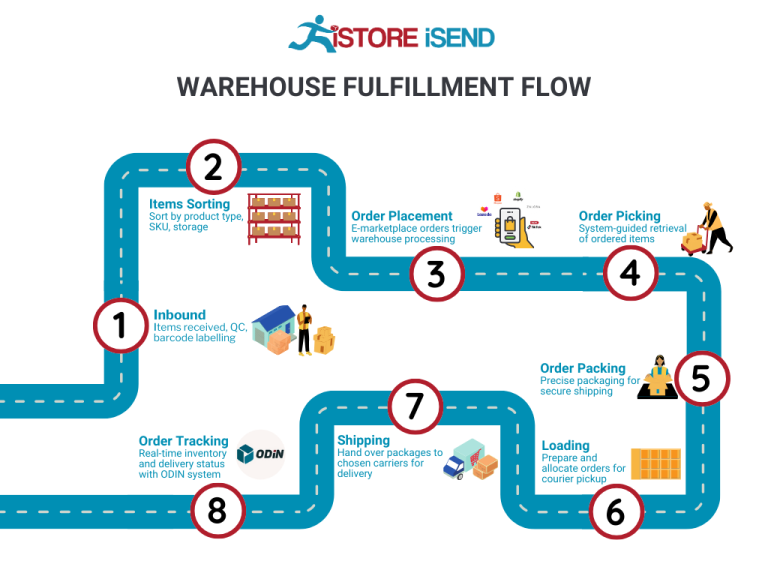
4. Order Packing
After items have been picked, they move on to the order packing stage. Here, products are carefully packaged for shipment, which includes selecting the right box or envelope, adding protective materials, and labeling the package with shipping information. A key term associated with this step is packaging materials, which encompass everything from boxes to cushioning materials.
The importance of proper packing cannot be overstated. Well-packed orders reduce the risk of damage during transit and help ensure that products arrive at the customer’s door in excellent condition. Additionally, effective packing can optimize shipping costs by minimizing dimensional weight and avoiding unnecessary charges. This stage is an opportunity for businesses to enhance their brand image; thoughtful packaging can create a positive unboxing experience for customers, fostering loyalty and encouraging repeat purchases.
5. Shipping & Delivery
The final step in the order fulfillment process is shipping and delivery. Once an order is packed, it is handed over to a shipping carrier for transportation to the customer’s address. This stage involves selecting the appropriate shipping method based on factors such as delivery speed, cost, and destination. Key terms related to this step include shipping labels and tracking numbers, which provide customers with real-time updates on their order’s status.
Shipping and delivery are critical for customer satisfaction and retention. Timely and accurate delivery builds trust and reinforces a positive shopping experience. Offering multiple shipping options can cater to different customer needs, whether they prioritize speed or cost. Additionally, effective communication during this stage, such as sending tracking information and updates, keeps customers informed and engaged, further enhancing their overall experience.
By understanding and optimizing each step of the order fulfillment process, e-commerce businesses can significantly improve their operational efficiency, reduce costs, and ultimately drive customer satisfaction. This comprehensive approach not only streamlines logistics but also positions businesses for sustainable growth in a competitive market.
Comparing Fulfillment Models: In-House vs. 3PL vs. Dropshipping
Fulfillment Model Comparison
| Model | Who Handles Inventory | Best For (Business Stage) | Key Advantage | Key Disadvantage |
|---|---|---|---|---|
| In-House Fulfillment | The business itself | Startups to established | Full control over operations | High overhead costs and resource-intensive |
| Third-Party Logistics (3PL) | A third-party logistics provider | Growing businesses | Scalability and expertise | Less control over inventory and processes |
| Dropshipping | Supplier or manufacturer | Startups and niche markets | Low startup costs and no inventory risk | Lower profit margins and longer shipping times |
In-House Fulfillment
In-house fulfillment involves managing the entire order processing and shipping operations within your own facilities. This model offers e-commerce businesses complete control over their inventory, warehousing, and logistics. Companies that choose this approach can customize their fulfillment processes to suit their specific needs, allowing for personalized packaging and branding efforts. In-house fulfillment is particularly beneficial for startups and established businesses that prioritize quality control and customer experience. However, this model can lead to significant overhead costs, including staff salaries, warehouse leases, and equipment purchases. Additionally, as order volumes increase, the complexity of operations can become overwhelming, requiring further investment in logistics technology and workforce. Businesses must balance the benefits of control and customization with the potential risks of scalability and resource allocation.
Third-Party Logistics (3PL)
Third-party logistics (3PL) providers offer a flexible and scalable fulfillment solution for growing e-commerce businesses. By outsourcing logistics to a 3PL, companies can leverage the expertise, technology, and resources of established logistics providers, allowing them to focus on core business activities such as marketing and product development. This model is ideal for businesses experiencing rapid growth or seasonal fluctuations, as 3PLs can quickly adjust capacity to meet changing demands. Key advantages of using a 3PL include reduced shipping costs, access to advanced logistics technology, and improved operational efficiency. However, partnering with a 3PL also means relinquishing some control over inventory management and fulfillment processes, which may lead to challenges in communication and quality assurance. Businesses must carefully select a 3PL partner that aligns with their brand values and operational needs to maximize the benefits of this model.
Dropshipping
Dropshipping is a fulfillment model where retailers sell products without holding inventory. Instead, when a customer places an order, the retailer forwards the order details to a supplier or manufacturer, who then ships the product directly to the customer. This model is particularly attractive for startups and niche markets, as it eliminates the need for upfront inventory investment and reduces financial risk. With dropshipping, businesses can offer a wide variety of products without the burden of warehousing and fulfillment logistics. However, this model comes with its own set of challenges, including lower profit margins due to reliance on suppliers for pricing and shipping. Additionally, the longer shipping times and potential quality control issues can impact customer satisfaction. As a result, entrepreneurs must carefully vet suppliers and establish clear communication channels to ensure a smooth customer experience while leveraging the benefits of dropshipping.
Conclusion
Choosing the right fulfillment model is critical for e-commerce businesses looking to scale effectively. Each model—In-House Fulfillment, Third-Party Logistics, and Dropshipping—offers unique advantages and disadvantages that can significantly impact operational efficiency, customer satisfaction, and overall profitability. By understanding the nuances of each approach, business owners can make informed decisions that align with their growth strategies and market demands. Whether opting for full control with in-house fulfillment, leveraging the expertise of a 3PL, or minimizing risk through dropshipping, it’s essential to evaluate your specific business needs, resources, and long-term goals to select the most suitable fulfillment strategy.
A Deep Dive into Amazon FBA: Pros, Cons, and Who It’s For
Understanding Fulfillment by Amazon (FBA)
Fulfillment by Amazon (FBA) is a service offered by Amazon that allows sellers to store their products in Amazon’s fulfillment centers. Amazon takes care of storage, packaging, and shipping, while also handling customer service and returns. This service has become increasingly popular among e-commerce businesses looking to leverage Amazon’s vast logistics network and customer base.
How FBA Works
-
Setting Up: Sellers begin by creating an Amazon seller account and enrolling in the FBA program. They then prepare their products according to Amazon’s guidelines, which include labeling and packaging requirements.
-
Shipping Products to Amazon: Once the products are ready, sellers ship them to Amazon’s fulfillment centers. Amazon provides specific instructions on how to prepare and send inventory, including which fulfillment center to use.
-
Storage: After the products arrive at Amazon’s warehouses, they are stored until an order is placed. Amazon uses sophisticated inventory management systems to track stock levels and manage product availability.
-
Order Processing: When a customer places an order for a product fulfilled by FBA, Amazon picks, packs, and ships the item on behalf of the seller. This process is seamless and typically very quick, ensuring a high level of customer satisfaction.
-
Customer Service and Returns: Amazon also handles customer service inquiries and processes returns for FBA orders. This alleviates the burden on sellers and provides customers with the trust and reliability associated with Amazon’s customer service.
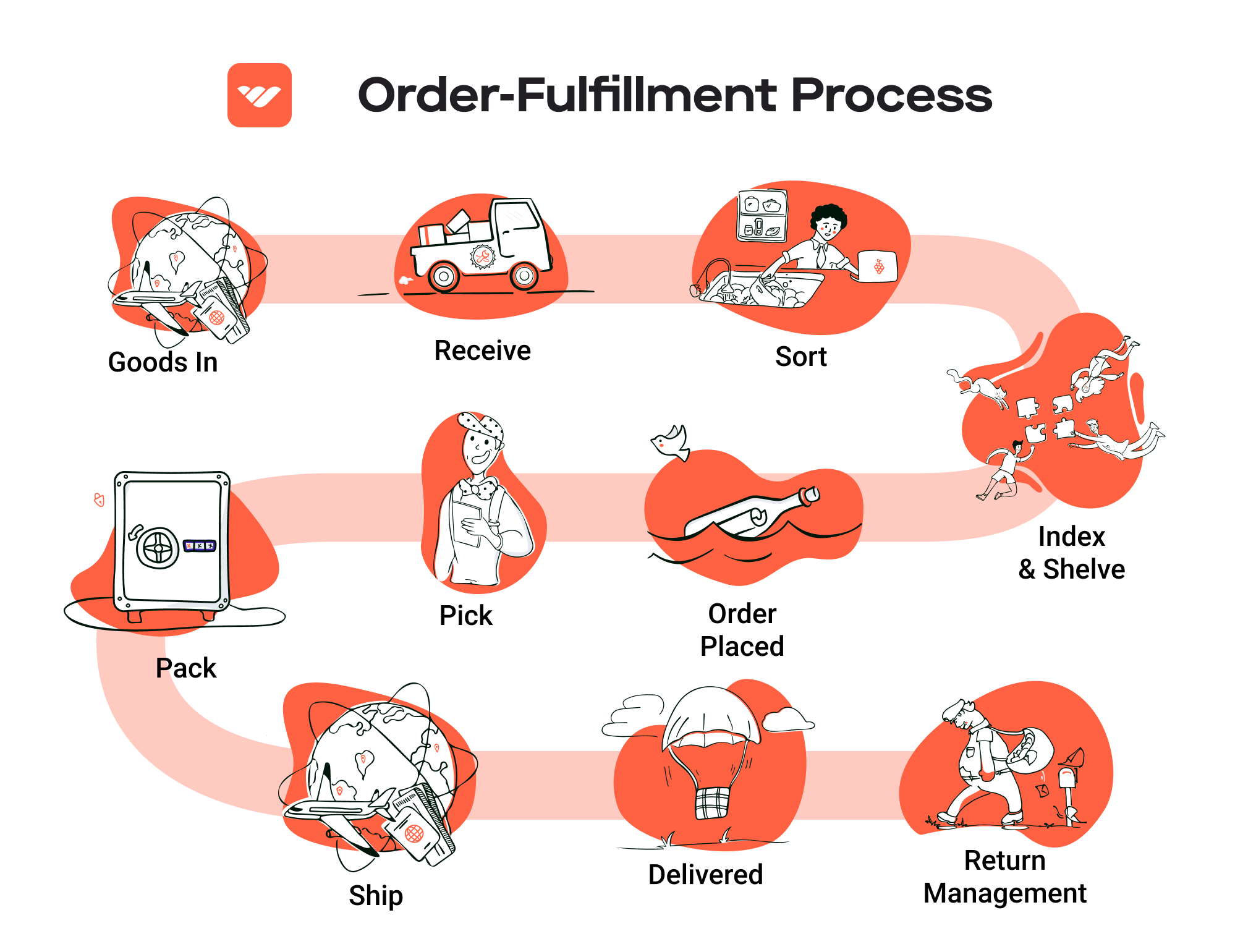
Pros of Using Amazon FBA
1. Prime Eligibility
One of the most significant advantages of FBA is that products become eligible for Amazon Prime. This means they can be shipped with expedited delivery options, attracting Prime members who prefer fast and free shipping. This can significantly increase sales and visibility.
2. Customer Trust
Products fulfilled by Amazon benefit from the trust associated with the Amazon brand. Customers are more likely to purchase items that are backed by Amazon’s customer service and return policies. This trust can lead to higher conversion rates and repeat purchases.
3. Multi-Channel Fulfillment
FBA isn’t limited to sales on Amazon alone. Sellers can use FBA to fulfill orders from their own websites or other marketplaces. This multi-channel fulfillment capability allows sellers to streamline their logistics and maintain consistent inventory across different sales platforms.
4. Scalability
Using FBA allows businesses to scale their operations without the need for significant investment in logistics infrastructure. Sellers can focus on product development and marketing, while Amazon manages the logistics.
5. Time Savings
By outsourcing fulfillment to Amazon, sellers can save time on order processing, shipping, and customer service. This enables them to focus on growing their business and optimizing their product offerings.
Cons of Using Amazon FBA
1. High Fees
While FBA offers many benefits, it comes with costs that can add up quickly. Sellers are charged for storage fees based on the space their products occupy and fulfillment fees for each item sold. These costs can significantly impact profit margins, especially for low-cost items.
2. Strict Inventory Rules
Amazon has stringent inventory management policies. Sellers must adhere to strict guidelines for labeling, packaging, and shipping. Failure to comply can result in additional fees or penalties, making it crucial for sellers to understand and follow Amazon’s rules.
3. Commingling Risks
FBA uses a system of commingling inventory, which means that products from different sellers may be stored together. This can lead to issues if a customer receives a defective item from another seller, potentially affecting the seller’s ratings and customer trust. Sellers who want to avoid this risk can opt for stickered inventory, but this may incur additional costs.
4. Limited Control
When using FBA, sellers relinquish a degree of control over their inventory and fulfillment processes. This can be challenging for businesses that prefer to manage their logistics and customer interactions more directly.
5. Seasonal Demand Fluctuations
During peak seasons, Amazon’s fulfillment centers can become overcrowded. This can lead to inventory storage limits and increased fees, which can be problematic for sellers who experience seasonal spikes in demand.
Who is FBA Best For?
Fulfillment by Amazon is particularly well-suited for:
-
Small to Medium-Sized Businesses: Companies that lack the infrastructure to manage their own logistics can benefit greatly from FBA. It allows them to compete with larger businesses without significant upfront investments.
-
Sellers with High Sales Volumes: Businesses that sell products with high turnover rates can leverage FBA to streamline their operations and maximize efficiency.
-
E-commerce Entrepreneurs: New entrepreneurs looking to enter the online marketplace can use FBA to quickly establish their presence on Amazon without the complexities of managing fulfillment.
-
Brands Seeking Exposure: Brands that want to increase their visibility on Amazon and attract Prime customers will find FBA advantageous.
-
Multi-Channel Sellers: Businesses selling across multiple platforms can benefit from FBA’s ability to fulfill orders from various sources, simplifying their logistics and inventory management.
In conclusion, Amazon FBA presents a compelling option for e-commerce businesses looking to simplify their logistics and tap into Amazon’s vast customer base. However, it’s essential for sellers to carefully weigh the pros and cons and consider their specific business needs before committing to the program.
Core Services Offered by Fulfillment Centers
Inventory Management & Warehousing
Inventory management and warehousing are foundational services provided by fulfillment centers, crucial for the smooth operation of any e-commerce business. This service involves the systematic handling of inventory, from receiving products to storing them in a manner that optimizes accessibility and efficiency.
What It Is: Fulfillment centers employ sophisticated inventory management systems that track stock levels, manage reordering processes, and forecast demand based on historical data and trends. These systems allow businesses to maintain optimal inventory levels, ensuring that they are neither overstocked (which ties up capital) nor understocked (which can lead to missed sales opportunities).
Benefits: The primary advantage of effective inventory management is enhanced operational efficiency. By having a clear view of stock levels and trends, e-commerce businesses can make informed decisions about purchasing and stocking. This reduces the risk of stockouts or excess inventory, both of which can negatively impact cash flow and customer satisfaction. Additionally, improved inventory management leads to reduced holding costs, as products are stored effectively and can be rotated based on demand.
Pick and Pack Services
Pick and pack services are integral to the fulfillment process, serving as the bridge between order placement and delivery. This service involves selecting (picking) the ordered items from the warehouse shelves and then packaging (packing) them for shipment to the customer.
What It Is: When an order is received, fulfillment centers utilize their inventory management systems to identify the location of the items within the warehouse. Trained staff or automated systems then retrieve the items and prepare them for shipping by carefully packing them to minimize damage during transit.
Benefits: The efficiency of pick and pack services directly affects order accuracy and speed. A streamlined process ensures that orders are fulfilled quickly and accurately, leading to higher customer satisfaction. Additionally, fulfillment centers often employ quality control checks during the packing process to reduce errors, which minimizes returns and enhances the overall customer experience. This service is particularly beneficial for e-commerce businesses looking to scale, as it allows for rapid fulfillment of increasing order volumes without compromising quality.
Kitting and Assembly
Kitting and assembly services offered by fulfillment centers provide businesses with the ability to create custom product bundles or kits, which can include multiple items packaged together for a specific purpose, promotional offers, or subscription services.
What It Is: This service involves assembling various components into a single package or product before shipping. For example, a fulfillment center might take a selection of skincare products and package them together in a gift set or promotional bundle. This can also include assembling products that require some form of setup or combination before they can be sold.
Benefits: Kitting and assembly can significantly enhance product offerings and create a unique value proposition for customers. By offering bundled products, e-commerce businesses can increase average order value and encourage upselling. Additionally, this service streamlines operations by reducing the time and complexity involved in assembling products at the point of sale, which can lead to faster delivery times and improved customer satisfaction. This is particularly advantageous during peak seasons or promotional events when demand for specific bundles may surge.
Returns Management (Reverse Logistics)
Returns management, or reverse logistics, is a critical service provided by fulfillment centers that handles the process of returned goods. This is an essential aspect of e-commerce, as it directly impacts customer satisfaction and retention.
What It Is: This service encompasses the entire lifecycle of returned products, from receiving the returned items to assessing their condition, restocking them, or processing them for disposal or refurbishment. Fulfillment centers often have dedicated processes and systems in place to manage returns efficiently.
Benefits: Effective returns management is crucial for maintaining customer loyalty and trust. A seamless returns process can enhance the customer experience, as customers are more likely to make a purchase if they know they can return items easily if necessary. Additionally, proper management of returns can help businesses recover value from returned items, whether through restocking, refurbishing, or reselling. This service also provides valuable data insights into product performance and customer preferences, enabling businesses to make informed decisions about inventory and marketing strategies.
In summary, the core services offered by fulfillment centers—inventory management and warehousing, pick and pack services, kitting and assembly, and returns management—are essential for e-commerce businesses looking to scale their operations efficiently. By leveraging these services, businesses can enhance their operational efficiency, improve customer satisfaction, and ultimately drive growth in a competitive marketplace.
How to Choose a Fulfillment Partner: A 6-Point Checklist
Location & Warehouse Network
Importance:
The geographical location of your fulfillment partner’s warehouses plays a critical role in shipping efficiency and costs. A strategically located warehouse network can reduce transit times and shipping expenses, enhancing your overall customer satisfaction.
Questions to Ask:
– Where are your warehouses located, and how do they align with my target markets?
– What is your average shipping time to major cities in my primary markets?
– Do you have plans for expanding your warehouse network in the future?
Technology & Integrations
Importance:
In today’s digital age, the technology a fulfillment partner uses can significantly impact your operational efficiency. A partner equipped with advanced inventory management systems and seamless integrations with your e-commerce platform can help you track orders in real-time and manage stock levels effectively.
Questions to Ask:
– What technology and software do you use for inventory management and order processing?
– Can your systems integrate with my existing e-commerce platform (e.g., Shopify, WooCommerce)?
– How do you handle order tracking and customer notifications?
Specializations (e.g., Cold Storage, Oversized Items)
Importance:
Different businesses have unique product requirements. Some may require specialized handling, such as cold storage for perishables or accommodations for oversized items. A fulfillment partner with the right specializations can ensure that your products are stored and shipped correctly, maintaining quality and compliance.
Questions to Ask:
– Do you have experience handling products similar to mine (e.g., perishable goods, fragile items)?
– What specific facilities or equipment do you have for specialized storage (e.g., climate control, oversized racks)?
– Can you provide examples of clients who have similar needs and how you’ve met them?
Scalability & Capacity
Importance:
As your business grows, your fulfillment needs will likely evolve. A partner that can scale with you—whether during peak seasons or as your business expands—ensures that you won’t face fulfillment bottlenecks or service interruptions.
Questions to Ask:
– How do you handle peak seasons, and what is your capacity for scaling up operations?
– What measures do you have in place to manage unexpected surges in order volume?
– Can you provide insights into your current client load and how you manage capacity?
Pricing and Contracts
Importance:
Understanding the pricing structure and contract terms is essential for budgeting and financial planning. Look for transparency in pricing, including any hidden fees, and ensure the contract terms are flexible enough to accommodate your business’s growth and changing needs.
Questions to Ask:
– Can you provide a detailed breakdown of your pricing structure, including any additional fees (e.g., storage, picking, shipping)?
– What are the contract terms, and is there flexibility for renegotiation based on performance or changing needs?
– Are there volume discounts or incentives for long-term contracts?
Customer Support & Reviews
Importance:
Exceptional customer support is vital for a successful partnership. You need to ensure that your fulfillment partner is responsive and can effectively address any issues that arise. Additionally, checking reviews and testimonials from other clients can provide insights into their reliability and service quality.
Questions to Ask:
– What customer support options do you offer (e.g., phone, email, chat), and what are your response times?
– Can you provide references from current or past clients in my industry?
– How do you handle issues such as order discrepancies or shipping delays?
Conclusion
Choosing the right fulfillment partner is a pivotal decision that can significantly impact your e-commerce operations. By using this checklist, you can ensure you consider all essential factors, from location and technology to customer support and pricing. A well-chosen partner will not only help you streamline your fulfillment processes but also enhance your overall customer experience, allowing your business to scale efficiently and effectively. As you evaluate potential partners, prioritize those who align with your business goals and demonstrate a commitment to quality service and innovation.
Understanding Fulfillment Pricing: A Breakdown of Common Fees
Initial Setup Fees
Initial setup fees are typically charged when you first engage a fulfillment service. These fees cover the costs associated with onboarding your business onto their system. This may include creating an account, integrating your e-commerce platform with their fulfillment software, and configuring inventory management systems. The fee structure can vary widely based on the complexity of your operations and the provider’s pricing model.
To get a clearer picture, expect fees to range from a few hundred to several thousand dollars. Some providers may waive these fees if you commit to a long-term contract, so it’s essential to discuss this during negotiations.
Receiving Fees
Receiving fees apply when your inventory is delivered to the fulfillment center. This fee covers the labor and resources needed to inspect, count, and store incoming products. Typically, these fees are calculated per pallet or per hour of labor, depending on the provider’s pricing structure.
For example, if a fulfillment center charges a receiving fee of $50 per pallet and you send 10 pallets, your total receiving fee would be $500. Understanding how your products are received and the associated costs will help you budget effectively.
Storage Fees (per pallet/bin)
Storage fees are ongoing charges for keeping your inventory in the fulfillment center. These fees are usually calculated based on the space your products occupy, typically on a per-pallet or per-bin basis.
For instance, a fulfillment center might charge $20 per pallet per month. If you have 5 pallets of goods, your monthly storage fee would be $100. It’s important to note that storage fees can vary based on factors like the location of the fulfillment center, the type of products stored, and how long they remain in inventory.
To minimize storage fees, consider optimizing your inventory turnover by analyzing sales trends and adjusting your stock levels accordingly.
Pick & Pack Fees (per item/order)
Pick and pack fees are charged for the labor involved in selecting products from inventory (picking) and preparing them for shipment (packing). This fee can be structured in different ways—either as a flat fee per order or a variable fee based on the number of items in an order.
For example, a fulfillment service may charge $1.50 per item picked and packed. If an order contains 3 items, the total pick and pack fee would be $4.50. Understanding this fee structure can help you optimize your order sizes and reduce costs. Additionally, some providers may offer tiered pricing where costs decrease with higher order volumes, so ask about these options.
Shipping Fees
Shipping fees are a crucial component of fulfillment pricing and can significantly impact your overall costs. These fees cover the transportation of your products from the fulfillment center to your customers. Shipping fees are typically calculated based on the weight and dimensions of the package, the shipping method chosen (standard, expedited, etc.), and the destination.
For example, if you ship a package weighing 5 pounds to a domestic address using standard shipping, the cost might be around $10. However, if you opt for expedited shipping, the fee could increase to $25 or more. To manage shipping costs effectively, consider negotiating rates with carriers or utilizing a fulfillment provider that offers discounted shipping rates due to their volume.
Tips for Getting an Accurate Quote
-
Define Your Needs: Clearly outline your fulfillment requirements, including the types of products, average order sizes, and expected order volumes. This information helps providers give you a more accurate quote.
-
Ask About Additional Fees: Inquire about any potential hidden fees, such as return processing fees, special handling fees, or seasonal surcharges, to avoid surprises later.
-
Compare Multiple Providers: Don’t settle for the first quote you receive. Compare offers from multiple fulfillment centers to find the best fit for your business.
-
Request a Detailed Breakdown: Ask for a detailed breakdown of all fees associated with their service. This transparency will help you understand the cost structure and make informed decisions.
-
Negotiate: Don’t hesitate to negotiate terms and fees, especially if you have a larger order volume or are willing to commit to a long-term contract.
By understanding these common fulfillment pricing models and following these tips, you can better navigate the complexities of fulfillment costs and ensure your e-commerce business remains profitable as it scales.
Frequently Asked Questions (FAQs) about Fulfillment
1. What does “unfulfilled” mean in the context of order fulfillment?
“Unfulfilled” indicates that an order has been placed, but none of the items have been shipped yet. This status typically occurs after a customer completes their purchase, and it signifies that the order is still in the processing phase, awaiting the next steps for fulfillment.
2. What are the common reasons an order remains unfulfilled?
Orders may remain unfulfilled for several reasons, including stock shortages, payment verification issues, or delays in processing. Additionally, if an item is on backorder or if the fulfillment center is experiencing operational delays, the order may stay in the unfulfilled status.
3. How can I check the status of my unfulfilled order?
Most e-commerce platforms provide customers with access to order status updates through their account dashboard or via confirmation emails. You can typically log in to your account, navigate to your order history, and view the current status of your unfulfilled order.
4. What steps should I take if my order has been unfulfilled for an extended period?
If your order has been unfulfilled for longer than expected, you should first reach out to the customer service team of the retailer. They can provide specific information regarding the delay and potential resolution. It’s also advisable to check your email for any notifications regarding stock issues or payment concerns.
5. How does the fulfillment process work after an order is marked as unfulfilled?
Once an order is marked as unfulfilled, it typically goes through several stages: verification of payment, inventory checks, picking items from the warehouse, packing, and finally shipping. If any issues arise during these stages, the order may remain unfulfilled until resolved.
6. What is the difference between a warehouse and a fulfillment center?
A warehouse is primarily a storage facility where goods are kept until needed, while a fulfillment center is designed to handle the entire process of order fulfillment, including inventory management, packing, and shipping. Fulfillment centers are equipped to efficiently process orders and manage logistics, often using advanced technology to streamline operations.
7. What is a Third-Party Logistics provider (3PL)?
A 3PL is a company that provides outsourced logistics services, including warehousing, fulfillment, and shipping. By partnering with a 3PL, e-commerce businesses can leverage their expertise and infrastructure to improve fulfillment efficiency, reduce costs, and scale operations without the need for significant capital investment.
8. How much do fulfillment services typically cost?
The cost of fulfillment services varies widely based on factors such as the volume of orders, the complexity of the fulfillment process, storage needs, and shipping options. Generally, fees may include storage fees, picking and packing fees, and shipping costs. It’s best to request quotes from multiple fulfillment providers to compare pricing structures.
9. Can I change or cancel an order that is unfulfilled?
Yes, in most cases, you can change or cancel an order that is still unfulfilled. However, this may depend on the specific policies of the retailer. It’s advisable to contact customer service as soon as possible to ensure your request is processed before the order moves into the fulfillment stages.
10. How can I prevent unfulfilled orders in my e-commerce business?
To minimize unfulfilled orders, maintain accurate inventory levels, implement robust order processing systems, and ensure efficient communication between sales and fulfillment teams. Additionally, utilizing a reliable 3PL can enhance your order fulfillment processes, enabling quicker response times and reducing the likelihood of unfulfilled orders due to stock or logistical issues.
Conclusion: Is Outsourcing Fulfillment the Right Move for Your Business?
Evaluating the Benefits of Outsourcing Fulfillment
As e-commerce businesses grow, the complexity of managing fulfillment can become overwhelming. Outsourcing your fulfillment process can provide significant benefits that directly impact your efficiency and bottom line. One of the most critical advantages is time savings. By partnering with a fulfillment service, you can delegate the intricate logistics of order processing, inventory management, and shipping, allowing you to focus on strategic initiatives that drive sales and enhance customer engagement.
Scalability is another compelling reason to consider outsourcing. A reliable fulfillment partner can seamlessly adjust to fluctuations in demand, whether during peak seasons or unexpected market shifts. This adaptability means you can scale your operations without the burden of expanding your infrastructure or workforce, enabling you to respond quickly to opportunities and challenges.
Furthermore, tapping into the expertise of a third-party logistics provider brings a wealth of knowledge that can streamline your operations. These professionals are adept in the nuances of logistics, equipped with the latest technology and best practices to minimize errors and improve delivery times. This expertise translates into enhanced customer satisfaction, a crucial factor in today’s competitive e-commerce landscape.
However, the effectiveness of outsourcing hinges on selecting the right fulfillment partner. A thorough evaluation of potential providers is essential to ensure they align with your business goals and can support your growth trajectory.
As a strategic call-to-action, take the time to audit your current shipping and fulfillment processes. Assess whether your existing setup meets your growth needs or if partnering with a fulfillment service could provide the efficiency and scalability necessary for your business to thrive. By making an informed decision, you position your business for success in an increasingly competitive marketplace.
Important Disclaimer
⚠️ Important Disclaimer
The information in this guide is for educational purposes. Fulfillment services, pricing, and platform features change frequently. Always conduct your own due diligence and consult with providers directly before making business decisions.

